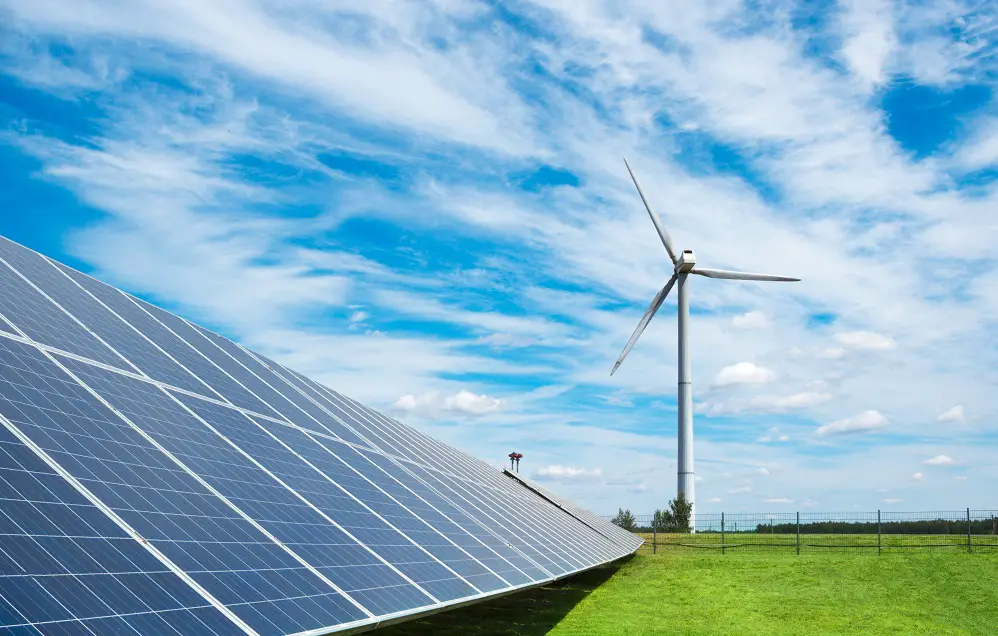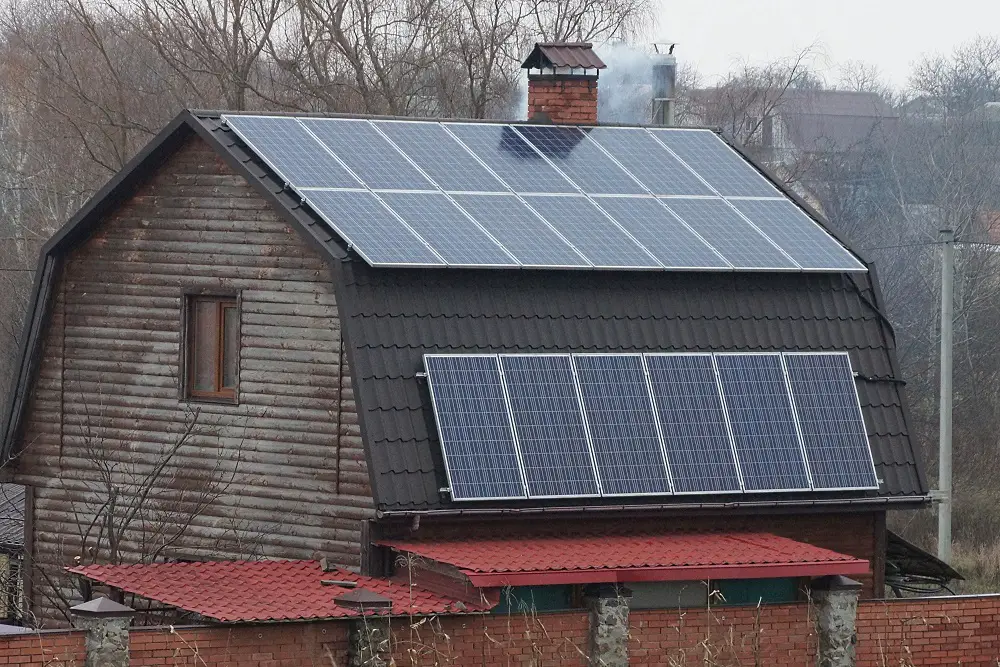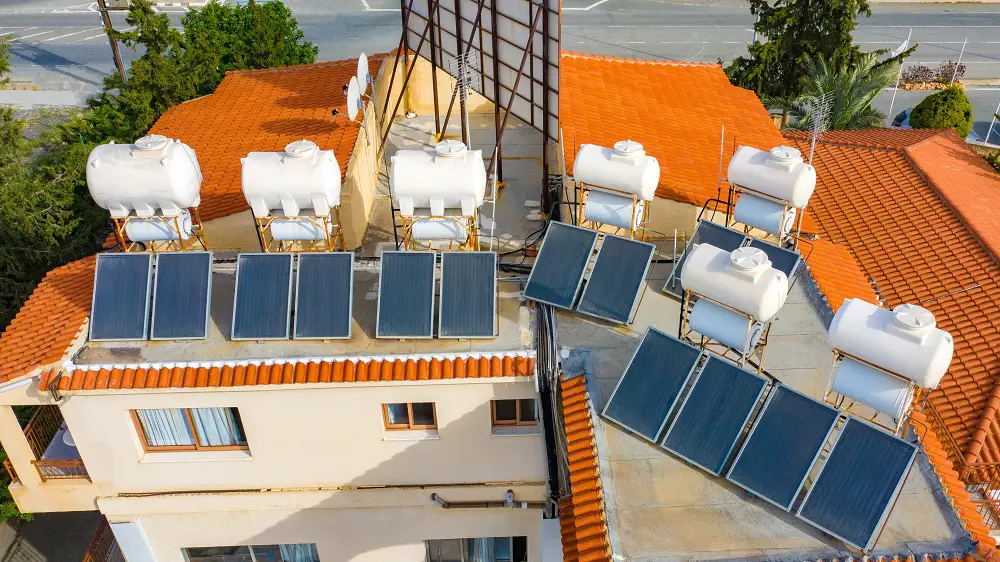As its name suggests, solar power relies upon the sun. Overcast skies during winter impact how much electricity is generated.
Below are wintry conditions and their impact on output levels.
Daylight Hours
Light levels decrease as daylight shortens throughout winter.
The sun sits lower in the sky so solar panels receive less exposure from less intense rays.
Temperature
Contrary to belief, solar panels work more efficiently in cooler temperatures; they don’t overheat.
For maximum generation, solar panels are ideally situated in bright but cool spots.
In these conditions, they produce more clean energy than cells placed in constant, hot sunlight.
When summer temperatures exceed 80°f., the inverter fans need to work harder to prevent the cell from overheating. This results in less efficiency, especially as dust and other particulates in the air increase at this time of year.
Snow
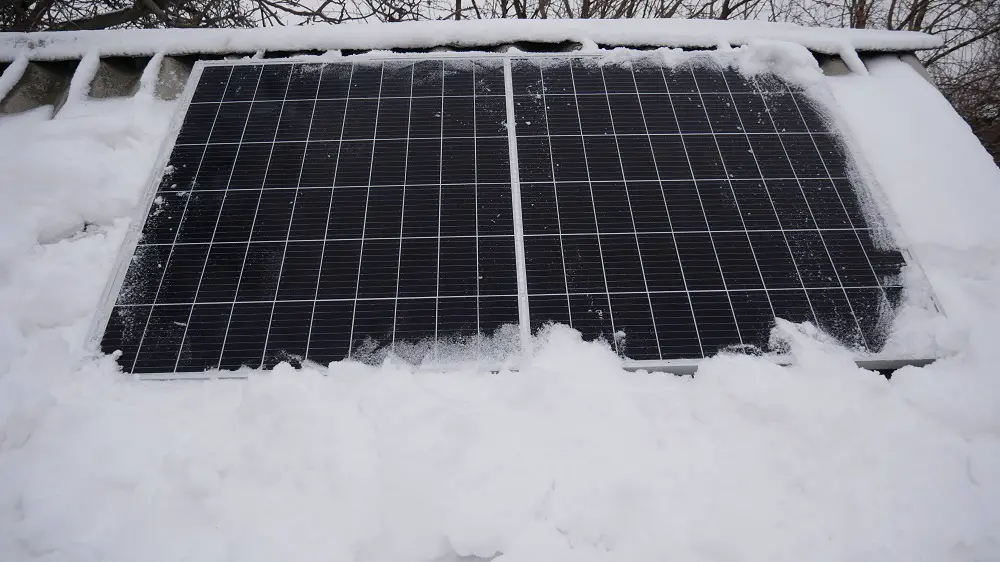
If thick snow covers the solar panels, no light can reach the cells, resulting in no power.
Unless the snow is especially heavy, don’t risk climbing on the roof in such conditions. Solar panels are positioned at an angle that encourages snow to slide off naturally.
Melting snow has the added benefit of cleaning the PV cells, improving efficiency.
On a positive note, the bright, smooth surface of the snow reflects the sun onto the cells, therefore increasing productivity.
Ice
In theory, ice is clear and solar panels are waterproof, so we don’t foresee any issues.
Winter Output vs Summer Output
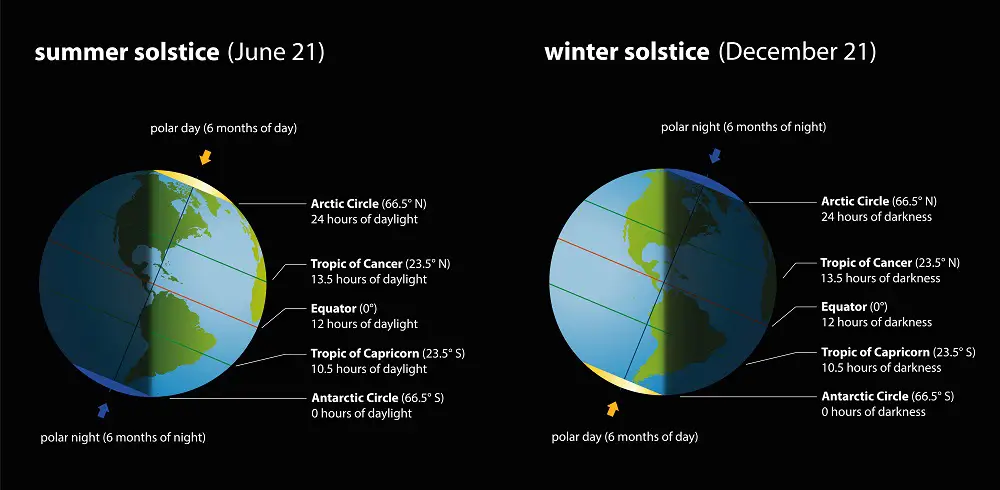
Solar panels work in winter, though their KW output is understandably reduced.
On overcast days, each panel is anywhere between 50% and 90% less efficient when compared to a full-sunshine, summer day.
What does this mean going forward?
All seasonal factors are taken into consideration when planning a solar-powered installation.
Battery back-up systems store any excess electricity generated through summer for use in winter.
This system is known as Net Metering and enables solar panel owners to earn enough energy credits during spring and summer to redeem in fall and winter.
Solar Trackers
During the winter, the sun spends most of its time warming the southern hemisphere. At this time of year, those in the northern hemisphere suffer shorter, colder days when the sunlight is far less intensive.
Ground-mounted and large free-standing solar installations have dual access trackers fitted. These behave in much the same way as a sunflower head follows the sun to thrive.
PV panels change the angle and rotate throughout the day, following the path of the sun., maximizing output.
Single access trackers adjust between the seasons. Typically the angle adjusts 25° between summer and winter to receive optimum radiation.
How Effective is Solar Power in Winter?
The electrical output of solar power is measured in kilowatts. A 3-bedroom house typically requires a 3.5kw peak system. Average solar panels have an output of 265w, though they can range from 225 – 350w; The higher the wattage, the greater the electrical output.
The daily output amount created is a simple calculation; the PV wattage X the number of sunlight hours.
Therefore, a 265w PV panel in 6 hours of direct sunlight achieves 1590 watt-hours (Wh) or 1.5-kilowatt hours (kWh)
In summer, a 3kw system, facing due south might produce 300kWh during the brightest months of June or July.
That same system might only produce 75kWh during December or January.
Ergo, a standard domestic solar array of between 12 and 16 panels generates around a quarter of the energy in winter than it does in summer.


